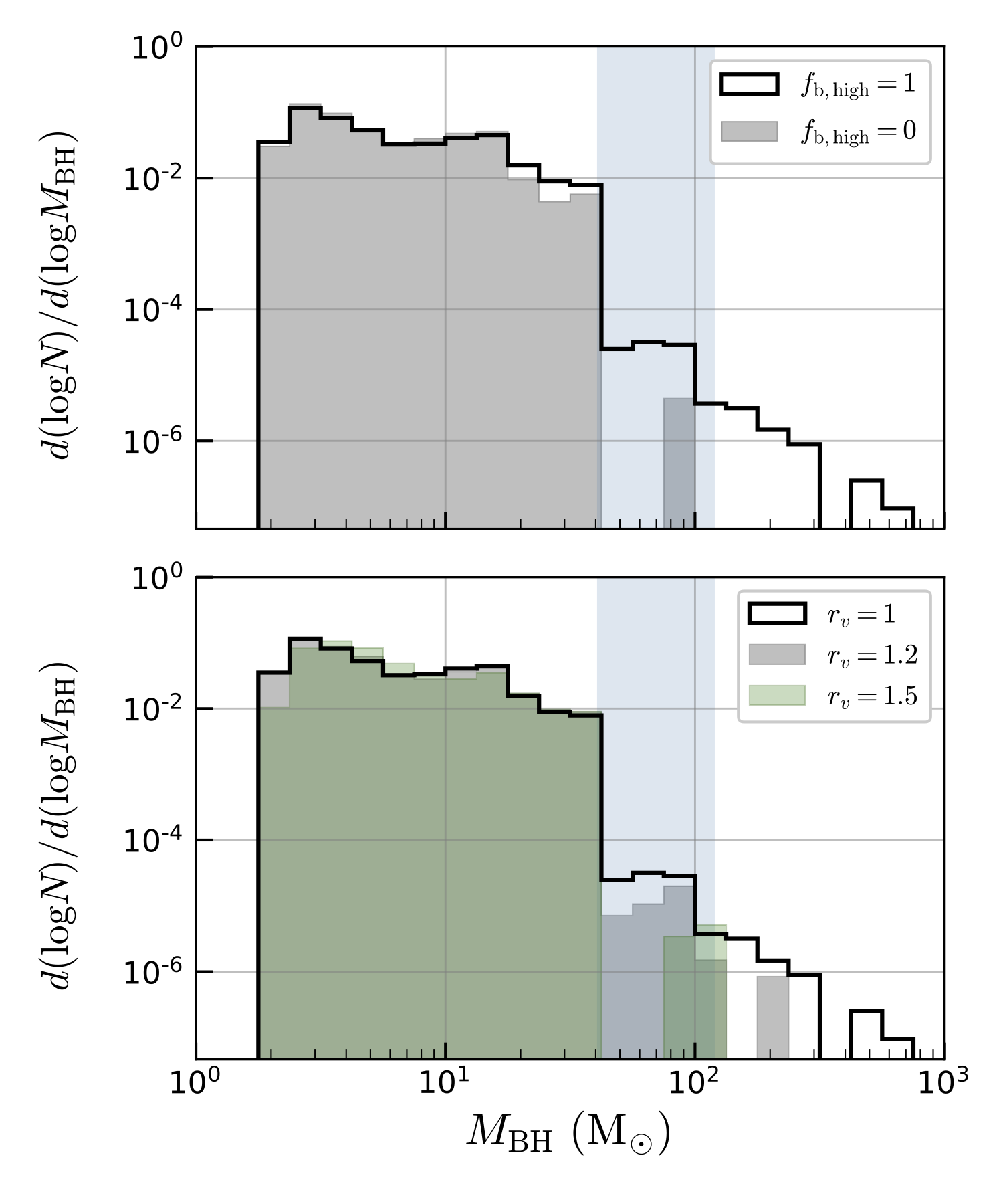We perform the set of simulations using Cluster Monte Carlo (CMC) which models the evolution of stellar clusters. See
Kremer et al. (2020b)
for a summary of CMC. This code incorporates COSMIC, which simulates compact object and stellar binaries (refer to
Breivik et al. (2019) for a
detailed description) as well as Fewbody, a numerical toolkit that performs scattering experiments (refer to
Fregeau et al. (2004) for a detailed description).
See
Kremer et al. (2020a) for a brief discussion on the treatment of collision products, collision runaways and compact object formation for this set of
simulations.
We study the parameter space spanned by variations in both the virial radius and the high-mass binary fraction, which in this study we define as the fraction of masses above 15 M
☉ that are in a binary at the
time of cluster formation. The simulations performed include values for virial radius of 1, 1.2 and 1.5 pc and high-mass binary fraction of 0 and 1. For all models, the low-mass binary fraction is kept at 0.05. Furthermore, the simulations consist of
8 × 10
5 objects and a total cluster mass of 4.7 × 10
5 M
☉. The simulations are run for a total of 30 Myr, as we are only interested in black hole growth,
which happens in this time span. The metallicity is set to 0.002 (0.1 Z
☉) and we adopt a Kroupa IMF in the range of 0.08 - 150 M
☉. We run multiple realizations of each set of initial parameters with different random seeds
to increase the robustness of our results.






